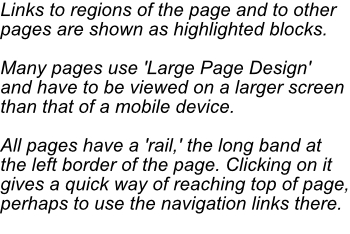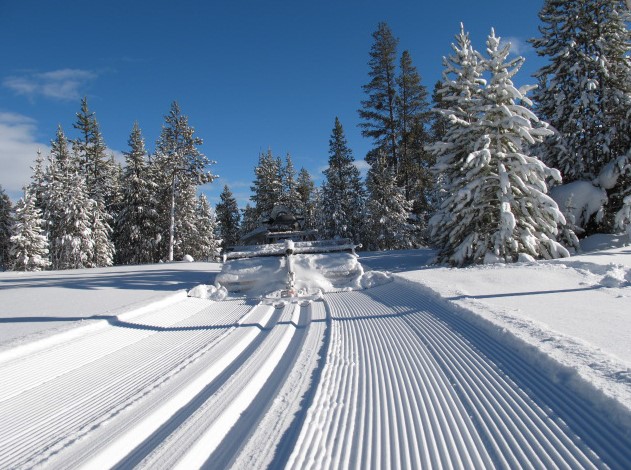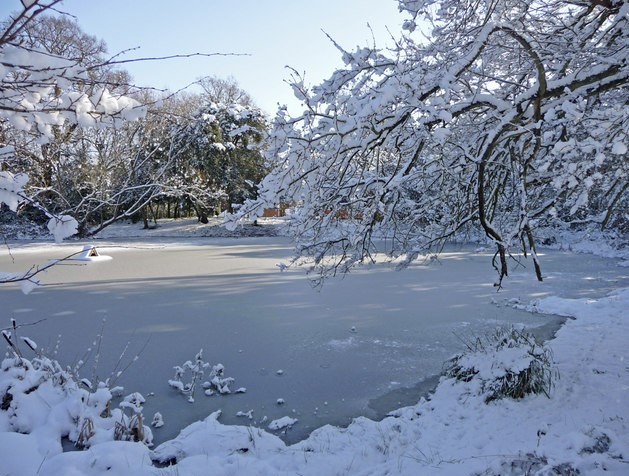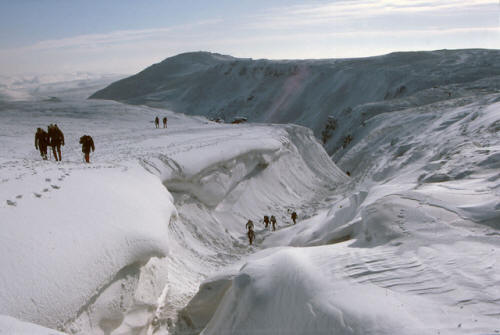
Cello, violin, viola playing and a Proms concert



Above, my violin (and viola.) The violin
is a 'copie de' Stradivarius, according to a faded label you can just about
see if you look in one of the f-holes, so it's probably a French violin. It
cost me something like £250, a very good instrument for the money. The viola
wasn't in the same price range. It cost me £40 - another very good
instrument for the money. This was a long time ago. They must be worth much
more now. But prices and commercial transactions have nothing to do with
playing string instruments, or woodwind, brass and percussion instruments,
of course.
Below, another view of the violin and viola:

Prom 47 2018
The BBC Proms from the Royal Albert Hall
The BBC
Symphony Orchestra perform works by Elgar and Prokofiev, and are joined by
Pekka Kuusisto for the World Premiere of a new violin concerto by Philip
Venables.
- from the BBC announcement.
The composer Philip Venables contacted me to say that he was writing a violin concerto which included words as well as music. It would be a tribute to the Hungarian violinist Rudolph Botta. He'd seen a piece I'd written on an aspect of violin technique. He knew that I'd studied with Rudolf Botta. Could he include the writing in his violin concerto? I agreed, of course. My name appears in the work so it was part of the performance: but only an incidental part, of course.
Rodney Lister has a very good piece on the concerto.
https://www.sequenza21.com/2018/08/the-proms-venables-venables-plays-bartok/
'Rudolph Botta, as Philip Venables wrote in his program note for his concerto Venables Plays Bartok, had a remarkable life ... He served in the Hungarian army during the Second World War, then was a member of the anti-Soviet resistance. He was sent by the Soviets to a labor camp in 1952, and during the time that he was there, was deliberately tortured and maimed so that he could no longer play the violin.'
I believe the fingers of his left hand were smashed with a hammer. When I went to his house, I saw a 'viola da gamba' there. This is an instrument with frets. It can be played without any of the precision which is essential when playing the violin. I didn't ask him about the instrument and he never mentioned it, but I think it's likely that his music making was confined to playing the viola da gamba. His career as a performing violinist had been ended, under horrific circumstances. His violin students could still benefit from his work.
Rodney Lister also writes:
After his release from the camp (as part of an amnesty following Stalin’s death), he started a music school in his hometown of Bonyhįd. He was a leader of the 1956 Hungarian revolution before fleeing to the United Kingdom with his family. After a short stint as a window cleaner, Botta became a teacher at the Royal Manchester College of Music (now called the Royal Northern College of Music), where he was influential on the lives and training of countless violinist, including Marilyn Shearn, among whose students was Philip Venables.
'In November of 1993, when the young Venables was fourteen years old and preparing for his Grade 6 ABRSM violin exam, Shearn took him, along with three other pupils, to play for Botta. Twenty-five years later, when helping his parents move house, Venables discovered a copy of a long forgotten video tape of the masterclass with Botta which his teacher had made. That rediscovery caused Venables to begin a process of research involving Botta’s life and a consideration of the intertwining of lives, musical and otherwise, of teachers and students, and, eventually to the composition of Venables Plays Bartok, a work which could be considered a violin concerto, but which he also describes as a ‘radio music drama’. A BBC commission, it was given its first performance on the Proms concert presented on August 17th by BBC Symphony, conducted by Sakari Oramo.'
' ... The interaction of Bartok’s music with Venables’s, and of recorded spoken text, both the excerpts and bits of the actual coaching with Botta ... the clarity of the time shifts in the stories, and the control and balancing of density of textures, is always engaging and interesting, but the unfolding of aspects of one person’s life and how it and he then go on to impact other lives in various ways is completely compelling and very moving. It was impressive in its conception and its masterly realization, and completely satisfying as a total experience.'
Rudolph was kind and good natured and very generous in his judgments - generous to a fault, in one case. He said that I could become a violin teacher myself. This was wrong, without a doubt. I practised hard - for hours every day, for most days of the week and I'd practised hard for my previous teachers - but I'd simply not been learning the violin for long enough and no matter how many hours a day I practised in the future, I could never have been good enough to be a violin teacher.
I didn't begin learning the violin when I was five years old or fifteen years old but in my thirties. I switched to the violin from the cello, but I only began learning the cello when I was 17. I didn't have very many lessons. When I did have lessons, I practised but in all the years I didn't have lessons, I either didn't do any proper practice at all or did no practice whatsoever.
At the school, there was a dusty cupboard with a
few musical instruments. Or was there only one? I wanted to learn the violin
but there was only a cello there, so I started learning the cello. Our
family wasn't filthy rich or modestly endowed - there was absolutely no
money available to buy a violin. The cello lessons were either free or cost
hardly anything - I can't remember which - and that was all they were worth.
I did have enough money to go to string quartet lessons. They didn't cost
very much - the benefits of sharing the cost between four people. The
teacher was abysmal, hopeless, a waste of space, but the experience was
wonderful. I treasure the memory of that time, but not of the teaching.
There wasn't any teaching to speak of. The three works I played in the short
time I had lessons were two Mozart quartets, K 387 and K 458, and a Schubert
quartet.
I was lucky too in the works I played in the very small
cello section of the school orchestra, including public concerts, including
Mozart's Linz symphony and Beethoven's Symphony 1. The music teacher who
conducted the orchestra was someone with musical values. He didn't teach me
music. I'd given up music as soon as I could - at the age of 12, I think it
was. I didn't have much aptitude for the subject.
Later, but not that many years later, I joined an orchestra, a much better one, and played in public concerts - Mozart's Prague Symphony and the Sinfonia Concertante for violin and viola. The soloists were members of the Lindsay string quartet, which had a worldwide reputation. Rehearsals for the concerts and the concerts themselves - above all, the concert that included the Sinfonia Concertante - were by far the best experiences of a time that was difficult for me.
The cello travelled down to London with me - I lived there for just over four years. The cello accompanied me when I was homeless - the landlord was breaking his mortgage agreement by letting his house out. The tenants didn't know that but one day, I went to the county court with another tenant to see if we could influence the decision to evict us. Of course, we couldn't. The tenant who went with me and said, 'So far as the court is concerned, we can sleep in the park, then?' I forget the exact words of the judge but he made it clear that that was fine by him.
We went back to the house and soon after the bailiffs arrived. I was on the street with a suitcase in one hand - and the cello in the other. The landlord was ready to allow us to sleep on his floor, as we'd paid the rent regularly, but I was the only one to take up his generous offer. I found another place to live quickly enough, so I never had to go looking for a derelict garden shed or a sheltered alleyway to sleep. I was none the worse for that particular experience.
I liked that cello but I was never fond of it, because I wasn't all that fond of cello playing, in isolation, for daily practice - even though the experience of playing the cello in works of the repertoire had been a transcendent experience. I never joined another orchestra. Eventually, the cello was stolen from the house where I lived and where I still am. I claimed what I had paid for it, many years before.
I played the violin in an orchestra for a short time and played in one or two public concerts but they weren't concerts where the pieces interested me at all. I've felt no urge at any time to join any other orchestra. If I had, I would have preferred to play the viola rather than the violin.
Cellists and violinists do have works to play for
solo cello and solo viola which are outstanding pieces. When I was a cellist
I played the Bach cello suites, leaving out the hardest bits, and when I was
a violinist, I played the Bach partitas and sonatas, generally, much, much
more difficult than the cello works. I had to leave out far more. The
Chaconne of the D minor partita is known for its fiendish difficulty. I've
played some parts of the Chaconne, but not all that much, and none of it
well.
For a long time, I've been a listener, not a listener as well as a player. No matter how good the player, if the player stops practising, the very good player becomes a very poor player. If the player is a poor player and stops practising, then the results are shocking. I've so many demands on my time, uses for my time and I couldn't possibly find the time and the energy to start practising again. If I did, I'd have to neglect other things which are very important to me.
Rowing
Rowing was a brief episode. Rowing was never very important to me, at the time I rowed and later. I've next to no interest in rowing. All this applies to rowing in a rowing eight, the kind of rowing practised in that well-known competition, the Oxford and Cambridge boat race. If I lived near a lake and had a small rowing boat, it would be completely different. Rowing would be a passion and i'd want to take to the lake often. Rowing is a superb form of exercise, of course, exercising the arms as well as the legs. When i did row in a rowing eight, the exercise was more intensive than any other form of exercise I've ever tried.
I'll only give a little information here, no mention of place or time, except for what I've already mentioned, the fact that it was a brief episode, lasting just under two months. In that time, I did train hard - six days a week, for about two hours a day, if I remember. Towards the end of that time, the boat i trained in competed against something like twenty other rowing teams and our team did win.
Rowing has a technique but overall, a technique which is less involved, less interesting than the technique of so many other sports. It wouldn't be true to claim that rowing is infinitely less intricate and interesting than football, but that's only because that would be a misuse of 'infinitely.' Instead, I'd simply say that there's no comparison between rowing and football and that rowing is far less important as a sport.
Rowing is practised in settings which have far more interest for me than the setting for football matches. I feel a strong affinity for water, for rivers, for lakes, for the sea. If I can't commune with any of these, a stream will have to do. Competitive rowing in a rowing eight and training in a rowing eight doesn't offer the delight of gliding over and through the water, or not continuous gliding. The wonderful smoothness of rowing can be soothing, to an extent, even when the boat is being driven hard, but there's a rhythm of rowing, the alternation of propulsion and glding. Taken as a whole, the rhythm is much more harmonious than the rhythm of football, even though football matches have periods when the ball is propelled, driven forwards by the rhythmic action of the feet. Football matches will also have periods of stasis, when the ball is kicked out of play, when play stops for fouls and other reasons.
Football is far more varied than rowing: in rowing, there's teamwork without any possibility of independent action. In football, there's teamwork and independent action, both the teamwork and the independent action taking an unlimited number of forms and variations, so that each match will be different.
The suspense of rowing is often short lived. One boat in a race gains on another. Will it maintain its lead? Will the crew tire, will the cox make a mistake in steering, getting too close to a bank, perhaps? There can be shifts in fortune for a time, sometimes for the duration of the race, almost, so that it's in doubt which crew will win. But often, one boat is so far behind the other that it's very, very unlikely that it will win.
Although football has comparable situations - a team which is losing by 5-0 at half-time is very likely to lose the match, there are astounding come backs and the suspense offered by football matches, or so many of them, is of a different kind, a higher order.
As for the Oxford and Cambridge boat race, it's a competition where so many of the competitors are intellectually strong, to a greater or lesser extent but a competition which offers next to no scope for the exercise of the mind. Football offers far, far more possibilities for thinking, including inspired thinking.
I've never been a spectator at an Oxford and Cambridge boat race and never had any wish to be a spectator, but in my experience, my limited experience as a competitor and my experience of watching amateur rowing teams, the spectators give a very favourable impression, very enthusiastic, delightful.
Soon after I started rowing, in a boat with an inexperienced cox - he'd started coxing at the same time that I and the others started rowing, our boat collided with the Cambridge University boat training on the river. I've a vivid memory of the coach / trainer pedalling fast and furiously on his bike towards our cox and saying sternly, 'In accordance with the statutes of the University of Cambridge I hereby fine you five pounds. This was a long time ago. Five pounds was a lot of money in those days.
Rowing necessarily allows next to no freedom of action to everyone in the team except for the cox. I exclude, of course, the theoretical freedom which every rower has to suddenly stop rowing and to shout out 'Stuff this. I've had enough' or something similar or something very different. The theoretical freedom to get up from the sliding seat and jump into the river.
The rower isn't a galley slave but despite the vast differences, the rower in a rowing eight is constrained and necessarily constrained, just like the galley slave. The rower has to keep rowing until the instruction comes to stop rowing, or the race is over.
One reason for including rowing on this page is to be able to compare rowing with orchestral playing, or playing an instrument in a quartet, or with a pianist, or performing a piece for solo instrument but with an audience.
When I was playing the cello in an orchestra, I and the other players had to keep playing until the conductor instructed us to stop - this would only happen in a rehearsal. Obviously, orchestras are stopped very often in rehearsal so that the conductor can make a point. In a public concert, we had to keep playing until we got to the end of the work.
All this was no hardship, caused no difficulties. Playing in an orchestra was wonderful whilst it lasted, which wasn't nearly long enough, for a variety of reasons. As for rowing, rowing for a few weeks was all I needed, just enough time to sample the activity, no more.
Below, for what it's worth, an image of the club I rowed for: the boat house (some of the boats are divided into two, for easier transportation).

Below, the kind of setting I prefer for rowing. Rowing on the River Wear.

Or this - a rowing 8 training on the River Tyne

Below, a rowing eight of the club I rowed for.




















